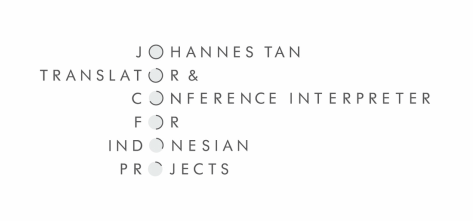Between Stockholm Syndrome and Lima Syndrome
Part 42: Parallel Thinking - Seeing the Forest with the Trees

Things are as they are. Looking out into the universe at night, we make no comparisons between right and wrong stars, nor between well and badly arranged constellations.
-ALAN WATTS (1915-1973)
One of Dr. Jill Bolte Taylor's astute observations as described in Part 40 (Alternative Thought Processes), is that while the temporal orientation of the left hemisphere focuses on the past and the future (like Ekido's), that of the right hemisphere focuses on the present moment (like Tanzan's). The left hemisphere's clinging to the past and fretting about the future—instead about letting go in the present moment, being in the Zone or Flow—has a much stronger behavioral impact than we would like to imagine. It is not a coincidence that while the left hemisphere operates in incessant chatter, judging, verbally-based mode and more vulnerable to blind obedience, the right one operates in deep inner peace, observing, visually-based mode, and less vulnerable to blind obedience.
As implied in Part 36 (Being in the "Zone") yet worth repeating, parallel right brain thinking is conducive to secularism and tolerance towards pluralism and diversity. On the other hand, serial left brain thinking is conducive to blind inclination to monopolize the truth which results in black-and-white "us versus them" dichotomies. "All monotheisms are, by their nature, anti-pluralistic," British author David Aaronovitch (b. 1954) suggests, "Paganism, on the other hand, is much better suited to modern ideas of tolerance and human rights. Under polytheism you can choose your own god overtly." Judge for yourself.
Those who are offended by Aaronovitch are respectfully advised to survey the Middle East, the cradle of the great Abrahamic religions. Within the last 70 years the region has been engulfed by nothing but continuous religious holy wars, sectarian violence, and barbaric tribalism. This paradox goes beyond the Middle East, where various secular societies fare much better than religious ones. To recite Phil Zuckerman in Think Religion Makes Society Less Violent? Think Again (Los Angeles Times, October 30, 2015), the most secular societies (Sweden, Denmark, Norway, Czech Republic, Estonia, Japan, Britain, France, the Netherlands, Germany, South Korea, New Zealand, Australia, Vietnam, Hungary, China and Belgium) fare the best in terms of crime rates, prosperity, equality, freedom, democracy, women's rights, human rights, educational attainment and life expectancy. (Poor human rights records in Vietnam and China are notable exceptions.) On the other hand, the most religious societies (Nigeria, Uganda, the Philippines, Pakistan, Morocco, Egypt, Zimbabwe, Bangladesh, El Salvador, Colombia, Senegal, Malawi, Indonesia, Brazil, Peru, Jordan, Algeria, Ghana, Venezuela, Mexico and Sierra Leone) tend to be the most problem-ridden in terms of high violent crime rates, high infant mortality rates, high poverty rates and high rates of corruption.
Pathetically, all these dramas just happen on earth, a tiny planet orbiting around an average star among a hundred thousand million other stars in the Milky Way galaxy. Adding insult to injury, that average star (which we call the "sun") is located about 27,000 light-years from the center of Milky Way which has a diameter of 100,000 light years. The Milky Way itself is but one among 100 billion to 200 billion galaxies (according to astrophysicist Mario Livio) or even a trillion galaxies (according to theoretical physicist Stephen Hawking) in the observable universe. That is by excluding the possibility of 'cosmic inflation' which entertains the existence of a multiverse (meta-universe) consisting of parallel universes!
"Things are as they are," as Alan Watts put it. Right stars and wrong stars, right galaxies and wrong galaxies, right gods and wrong gods, right religions and wrong religions, even no religions—does it even matter? Is there a holy war between Mario Livo and Stephen Hawking because of their different guesstimates on the number of galaxies in the universe?
Which brings us back to Dr. Taylor's feeling of deep inner peace due to her left brain stroke. Parallel thinking entails the ability to not only see the holy trees, but also see the barbaric forests (or jungles, if you will) of violence, hypocrisy, and tribalism which subsequently have caused corruption and social injustice condoned in organized religions, thanks to the coalescence, if not the collusion, between clergy infallibility and the political status quo. As observed by Roman poet and philosopher Titus Lucretius Carus (94-49 BCE): "All religions are equally sublime to the ignorant, useful to the politician, and ridiculous to the philosopher." Carus' observation was later echoed by French author Stendahl (1783-1842): "All religions are founded on the fear of the many and the cleverness of the few."
[To be continued.]
Johannes Tan, Indonesian Translator & Conference Interpreter
-ALAN WATTS (1915-1973)
One of Dr. Jill Bolte Taylor's astute observations as described in Part 40 (Alternative Thought Processes), is that while the temporal orientation of the left hemisphere focuses on the past and the future (like Ekido's), that of the right hemisphere focuses on the present moment (like Tanzan's). The left hemisphere's clinging to the past and fretting about the future—instead about letting go in the present moment, being in the Zone or Flow—has a much stronger behavioral impact than we would like to imagine. It is not a coincidence that while the left hemisphere operates in incessant chatter, judging, verbally-based mode and more vulnerable to blind obedience, the right one operates in deep inner peace, observing, visually-based mode, and less vulnerable to blind obedience.
As implied in Part 36 (Being in the "Zone") yet worth repeating, parallel right brain thinking is conducive to secularism and tolerance towards pluralism and diversity. On the other hand, serial left brain thinking is conducive to blind inclination to monopolize the truth which results in black-and-white "us versus them" dichotomies. "All monotheisms are, by their nature, anti-pluralistic," British author David Aaronovitch (b. 1954) suggests, "Paganism, on the other hand, is much better suited to modern ideas of tolerance and human rights. Under polytheism you can choose your own god overtly." Judge for yourself.
Those who are offended by Aaronovitch are respectfully advised to survey the Middle East, the cradle of the great Abrahamic religions. Within the last 70 years the region has been engulfed by nothing but continuous religious holy wars, sectarian violence, and barbaric tribalism. This paradox goes beyond the Middle East, where various secular societies fare much better than religious ones. To recite Phil Zuckerman in Think Religion Makes Society Less Violent? Think Again (Los Angeles Times, October 30, 2015), the most secular societies (Sweden, Denmark, Norway, Czech Republic, Estonia, Japan, Britain, France, the Netherlands, Germany, South Korea, New Zealand, Australia, Vietnam, Hungary, China and Belgium) fare the best in terms of crime rates, prosperity, equality, freedom, democracy, women's rights, human rights, educational attainment and life expectancy. (Poor human rights records in Vietnam and China are notable exceptions.) On the other hand, the most religious societies (Nigeria, Uganda, the Philippines, Pakistan, Morocco, Egypt, Zimbabwe, Bangladesh, El Salvador, Colombia, Senegal, Malawi, Indonesia, Brazil, Peru, Jordan, Algeria, Ghana, Venezuela, Mexico and Sierra Leone) tend to be the most problem-ridden in terms of high violent crime rates, high infant mortality rates, high poverty rates and high rates of corruption.
Pathetically, all these dramas just happen on earth, a tiny planet orbiting around an average star among a hundred thousand million other stars in the Milky Way galaxy. Adding insult to injury, that average star (which we call the "sun") is located about 27,000 light-years from the center of Milky Way which has a diameter of 100,000 light years. The Milky Way itself is but one among 100 billion to 200 billion galaxies (according to astrophysicist Mario Livio) or even a trillion galaxies (according to theoretical physicist Stephen Hawking) in the observable universe. That is by excluding the possibility of 'cosmic inflation' which entertains the existence of a multiverse (meta-universe) consisting of parallel universes!
"Things are as they are," as Alan Watts put it. Right stars and wrong stars, right galaxies and wrong galaxies, right gods and wrong gods, right religions and wrong religions, even no religions—does it even matter? Is there a holy war between Mario Livo and Stephen Hawking because of their different guesstimates on the number of galaxies in the universe?
Which brings us back to Dr. Taylor's feeling of deep inner peace due to her left brain stroke. Parallel thinking entails the ability to not only see the holy trees, but also see the barbaric forests (or jungles, if you will) of violence, hypocrisy, and tribalism which subsequently have caused corruption and social injustice condoned in organized religions, thanks to the coalescence, if not the collusion, between clergy infallibility and the political status quo. As observed by Roman poet and philosopher Titus Lucretius Carus (94-49 BCE): "All religions are equally sublime to the ignorant, useful to the politician, and ridiculous to the philosopher." Carus' observation was later echoed by French author Stendahl (1783-1842): "All religions are founded on the fear of the many and the cleverness of the few."
[To be continued.]
Johannes Tan, Indonesian Translator & Conference Interpreter



 RSS Feed
RSS Feed